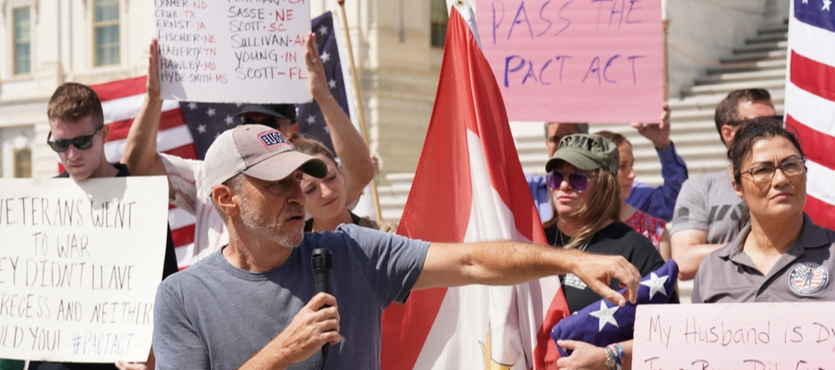Over the past few weeks, there has been a lot of news surrounding a new Burn Pit law. This law finally passed the U.S. Congress last week and was sent to President Biden to sign into law. After much fanfare, President Biden approved and signed the bill on August 10, 2022 and it is now law.
Burn pits were large areas where trash and other items for disposal were gathered and then burned. In Afghanistan, one burn pit was almost 10 acres in size. To ignite a burn pit, often times jet fuel was poured on the trash and then lit on fire. Much of the burned trash contained cancer causing carcinogens which were released into the air when burned. Many U.S. Servicemembers worked around these burn pits and were breathing the toxic air. Over time, many U.S. Servicemen developed illnesses which were either ignored or simply labeled the Iraqi or Afghani “crud”.
Known as the Promise to Address Comprehensive Toxins Act (PACT Act), the law expands benefits to members of the U.S. Armed Forces who were injured after being exposed to burn pits. The law does not apply to civilian contractors covered under the Defense Base Act.
The PACT Act creates a presumption in favor of the injured U.S. Servicemembers that certain conditions are automatically related to burn pit exposure. Said another way, if a U.S. Servicemember was exposed to burn pits and thereafter developed one of the accepted conditions, they will now automatically be entitled to medical care from the Veteran’s Administration. The U.S Servicemember will not have to prove the below listed conditions were caused by burn pit exposure:
Rhinitis; Sinusitis; Asthma; Squamous cell carcinoma of the larynx; Squamous cell carcinoma of the trachea; Adenocarcinoma of the trachea; Salivary gland-type tumors of the trachea; Adenosquamous carcinoma of the lung; large cell carcinoma of the lung; salivary gland-type tumors of the lung; sacromatoid carcinoma of the lung; typical and atypical carcinoid of the lung
To qualify for medical benefits under the PACT Act, a U.S. Servicemember must establish that symptoms developed within 10 years of the military service exposure from a qualifying country. The qualifying countries include Iraq, Afghanistan, Uzbekistan, Syria and Djibouti after September 19, 2001 as well as U.S. Servicemembers who served in certain qualifying Southwest Asia countries dating back to August 1990 to present.
However, a civilian contractor covered under the Defense Base Act is not entitled to this presumption of causal relationship. Under the Defense Base Act, the burden remains with the civilian contractor to prove they were exposed to burn pits, to prove the duration and extent of exposure and then to have a doctor provide a medical opinion linking the burn pit exposure to the civilian contractor’s condition. Thereafter, the Employer/Carrier can still dispute the causal relationship to deny benefits. Ultimately, a Judge would have to rule based upon the evidence.
Over time, medical research will further clarify conditions related to burn pit exposure. This research will certainly benefit civilian contractors covered under the Defense Base Act. Should you, family or friends who worked around burn pits in a qualifying country develop any of the qualifying conditions listed within this article, we strongly urge you to contact your medical provider. You should discuss with your doctor, in detail, your work, the distance to burn pits, the frequency of burn pit exposure and the length of time working at or near burn pits. With this information, your doctor may be able to determine whether your condition may be burn pit related. If your doctor issues a report that your condition was caused by burn pit exposure, we urge you to immediately notify the Employer who had you work at or near burn pits. We will gladly evaluate the claim to see if we can pursue DBA Benefits on your behalf.

